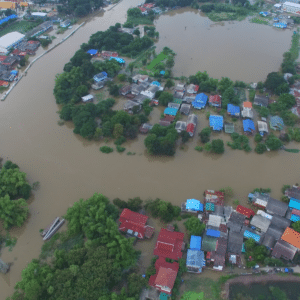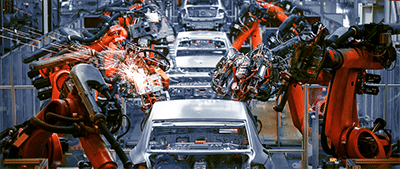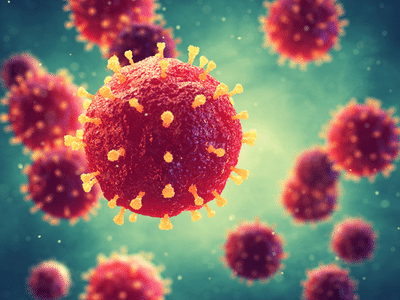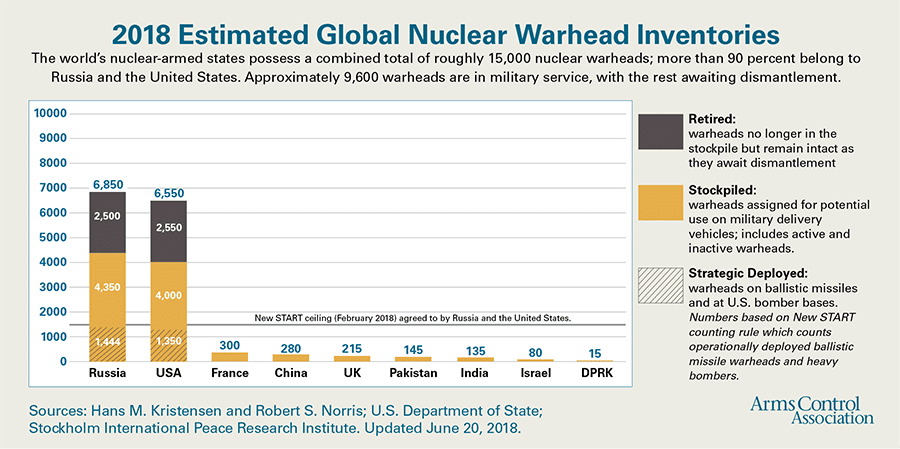What Does SHTF Mean? | Definition and Scenarios

If you've started looking into prepping or survivalism you've undoubtedly come across the acronym "SHTF".
In this guide, we'll not only define the term, but also give you an understanding of the scenarios it's used to depict.
SHTF Meaning
SHTF is an acronym meaning "shit hits the fan", though it's most commonly used to express "when shit hits the fan". Preppers and survivalists have adopted the term to express a group of scenarios which they believe will lead to a large degradation or collapse in society.
Example: "When automation makes it nearly impossible to find a job and SHTF, I'll be glad I stocked up on supplies".
SHTF Scenarios and Causes
Everyone's definition of a SHTF scenario is unique to them. To some it includes everything from more mild natural disasters, whereas others reserve the term only for the worst possible scenarios.
Here's a list of SHTF scenarios that people are most commonly prepping for:
- Power Outages
- Tornadoes
- Wildfires
- Flooding
- Blizzards/Winter Weather
- Hurricanes
- Earthquakes
- Drought
- Civil Unrest
- Effects of Automation
- Volcano Eruptions
- Super Volcano Eruptions
- Solar Flares and EMPs
- Pandemics
- Financial Crises
- Terrorist Attacks
- Cyber Attacks
- Nuclear War
- Radiological Disasters
- Effects of Artificial Superintelligence
Check out the following sections to learn more about some specific SHTF scenarios.

Common Natural Disasters
I'm grouping together more common natural disasters, as most of you reading this are more aware of their effects. These include tornadoes, hurricanes, earthquakes, severe winter weather, flooding, wildfires, and drought.
Despite being awful for those effected, much of the prepper community wouldn't label these events as true SHTF scenarios. The reasons for this include:
- The biggest reason is, those effected by these events typically receive societal aid in a timely manner.
- Most of these events come with warning, allowing people to take safety precautions.
- The average person living in areas susceptible to these disasters is well aware of their possibilities and the actions to take to improve their safety.
Preppers generally have a focus on self-sufficiency, as they believe there are scenarios in which they'll receive little to no aid by society. This is not the case, at least for those living in a first world country, in the event of a more common natural disaster.
Even in arguably the worst handled recent natural disasters, like Hurricane Katrina, those effected eventually received aid. With hurricanes, the smartest option is always to evacuate, which I recently did while in South Carolina days before Hurricane Florence. It's of course also recommended to evacuate during wildfires.
While not all of these scenarios offer the same level of warning, basic survival supplies will go a long way in most. A weeks amount of food and water will typically be sufficient for survival, so long as you make it through the initial impact.
Financial Crisis & Widespread Job Loss
Widespread civil unrest or civil disorder is commonly thought to be an outcome of many SHTF scenarios. Rioting, looting, burglary, and crime in general are all likely to be prevalent in many natural and man-made disasters.
It's likely easier to imagine civil unrest as a result of a disaster, though many fear this could also be an effect of financial crisis.
Personally, I'm most concerned with financial crises resulting from automation. In research conducted on job loss as a result of automation, there's a wide disparity in predictions.
One such prediction is that of Forrester Research. They predict a net loss of 12,430,000 jobs (24,700,00 jobs destroyed vs 14,900,000 jobs created) by 2027 in the United States. [1]
America's working force population includes 156,000,000 adults. [2] Some back of the envelope calculation shows that if every member of America's working force had just one job, 7.97% would lose their job. This is by no means a perfect estimate, as it doesn't include the fact that around 5% of Americans work 2 jobs. [3]
With that said, many fear this problem will only continue to get worse over time as technology evolves.
Another aspect to consider is the types of jobs that will be available as technology improves. Many of the first jobs to be automated are simpler jobs like retail, food services, and driving jobs. We've already began to see examples of retail employees being replaced by tablets. This could make it difficult for a large percentage of the population to find jobs they're qualified for.
In any case, a large portion of the population unable to support themselves and their families could potentially result in widespread civil unrest. Some Silicon Valley executives are themselves worried about the jobless turning on those who cost them their jobs through automation. [4]
Epidemics and Pandemics
Throughout the history of the world, there's been countless examples of widespread illness having devastating effects on populations.
The most noteworthy and devastating example is of course the Bubonic Plague (also known as The Black Death). The plague took place in the middle of the 14th century, resulting in an estimated 30-50% of Europe's population dying. [5]
Roughly 100 years ago, the 1918 Spanish Flu infected nearly one third of the world's population. Some estimates put the total deaths caused by this influenza pandemic as high as 100 million or around 6-7% of the world's population at the time. [6]
While we haven't experienced a pandemic SHTF scenario to the effect of those above in recent years, this does not mean they're impossible or unlikely.
The Centers for Disease Control and Prevention (CDC) states on its website,
"While we can't predict exactly when or where the next epidemic or pandemic will begin, we know one is coming."
Modern life has a variety of factors that could both lead to the outbreak of a pandemic disease and help a disease spread once the outbreak has begun:
- The World Health Organization (WHO) states, "Antibiotic resistance is one of the biggest threats to global health, food, security, and development today". [7] The use and misuse of antibiotics is contributing to changes in bacterium, resulting in current antibiotics losing effectiveness. The WHO goes on to say, "Without urgent action, we are heading for a post-antibiotic era, in which common infections and minor injuries can once again kill."
- In modern society, we live in closer proximity to each other than in the past. Today 54.8% of the world's population live in urban areas. [8]
- Today's world is far more global than it's ever been. Travelers come from all around the world, as do goods.
- The CDC says there's an increased risk of infectious pathogens spreading from animals to humans.
- With modern technology comes new ways for it to be used for evil. Bioterrorism represents another potential cause for pandemic diseases.
Solar Flares and EMPs
Solar Flares are sudden flashes of increased brightness on the sun. [9] These events are sometimes accompanied by a coronal mass ejection (CME), which is a significant release of plasma and magnetic field. [10]
The Carrington Event, a solar storm in 1859, was the most powerful CME to hit earth in recorded history. It was noted at the time, that telegraph systems across North America and Europe failed. In some cases telegraph operators were shocked and telegraph offices caught on fire. [11]
In a society so reliant on technology, the impact of a powerful CME could be devastating if it hit earth today. These naturally occurring events could down power grids across much of the world, resulting in a true SHTF scenario.
Unfortunately, the problems created by a Carrington sized CME may not be easy fixes.
In a report published by the U.S. National Academy of Sciences in 2008, it was estimated that a severe CME could cause between $1 and $2 trillion in damages and would take 4 to 10 years to fully recover from [12].
Not only could this effect modern conveniences like the internet and GPS, but it could effect nearly every facet of our lives. Even the systems used to store and transport basic needs like food and water are likely to be effected.
In July 23, 2012 a CME potentially stronger than the Carrington Event passed through Earth orbit. Fortunately, the blast site was not facing the earth. However, if the event happened just one week earlier, Earth would have been in the path of the CME.
Electromagnetic Pulses (EMPs) are short bursts of electromagnetic energy. [13] Some EMPs are naturally occurring, such as CMEs, but they can also be man-made.
The often most feared man-made EMPs are Nuclear Electromagnetic Pulses (NEMPs), EMPs resulting from nuclear explosions.
Similar negative effects to those of CMEs could take place as a result of a nuclear weapon exploding at high altitude. [14]
Nuclear War
When it comes to SHTF scenarios, nuclear war may very well be the first thought to enter your mind.
According to armscontrol.org, there are currently 9 countries with nuclear weapons:
- United States
- Russia
- France
- China
- United Kingdom
- Pakistan
- India
- Israel
- North Korea

Source: armscontrol.org
I think it's safe to say most Americans would be less than thrilled to see that some of these countries have nuclear warheads.
While countries having nukes is one thing, there's also a fear of them falling into the hands of terrorists.
The possibilities of nuclear war varies dramatically, from an isolated use by terrorist to all out mutually assured destruction. Regardless, if a nuclear weapon was used today as an act of war, I think it'd be safe to say SHTF.
Sources
- https://www.technologyreview.com/s/610005/every-study-we-could-find-on-what-automation-will-do-to-jobs-in-one-chart/
- https://www.politifact.com/truth-o-meter/statements/2013/jul/30/blog-posting/are-90-million-americans-not-working-or-looking-wo/
- https://www.wsj.com/articles/does-everyone-have-two-jobs-1532474015
- https://www.npr.org/2017/01/25/511507434/why-some-silicon-valley-tech-executives-are-bunkering-down-for-doomsday
- https://www.forbes.com/sites/alexberezow/2014/05/12/black-death-the-upside-to-the-plague-killing-half-of-europe/#1b666ce970d3
- https://www.ncbi.nlm.nih.gov/pmc/articles/PMC3291398/
- http://www.who.int/news-room/fact-sheets/detail/antibiotic-resistance
- https://data.worldbank.org/indicator/SP.URB.TOTL.IN.ZS
- https://en.wikipedia.org/wiki/Solar_flare
- https://en.wikipedia.org/wiki/Coronal_mass_ejection
- https://science.nasa.gov/science-news/science-at-nasa/2014/02may_superstorm
- https://www.reuters.com/article/us-electricity-solarstorms-kemp/time-to-be-afraid-preparing-for-the-next-big-solar-storm-kemp-idUSKBN0FU20Q20140725
- https://en.wikipedia.org/wiki/Electromagnetic_pulse
- https://en.wikipedia.org/wiki/Nuclear_electromagnetic_pulse
